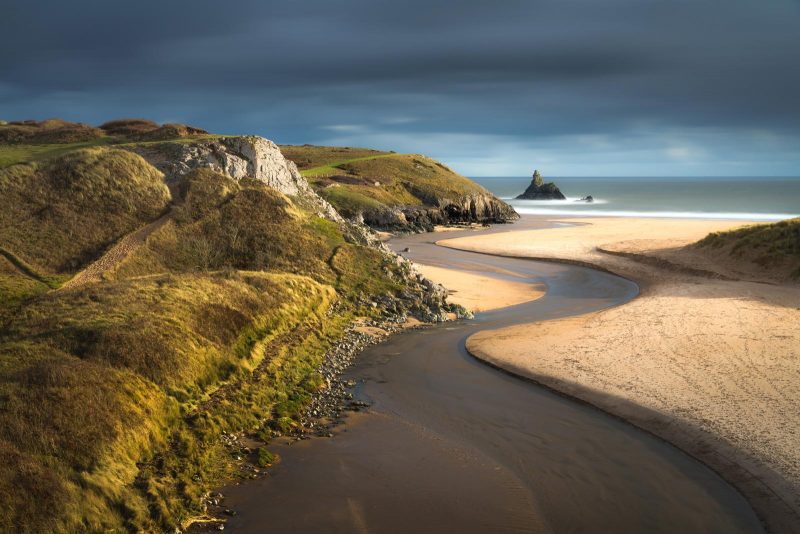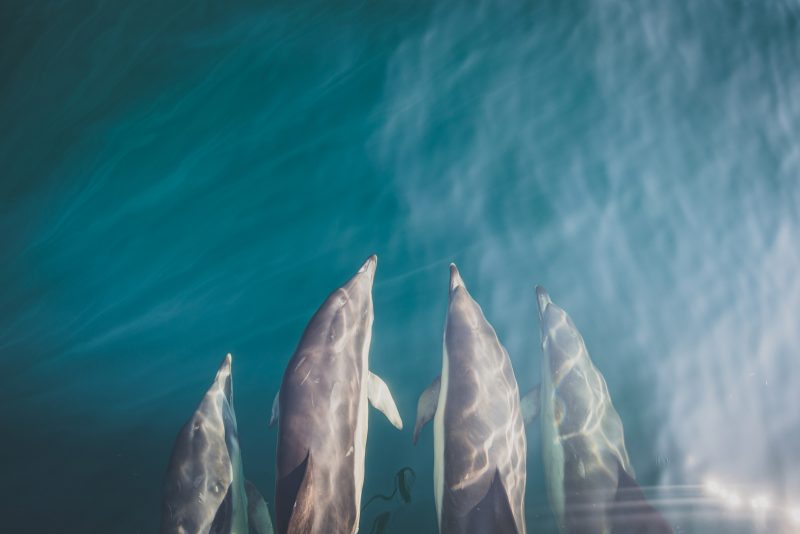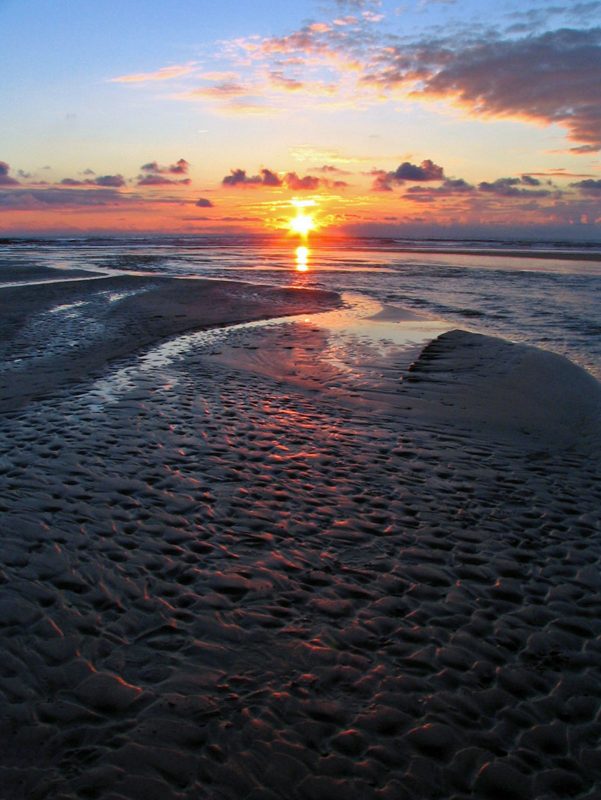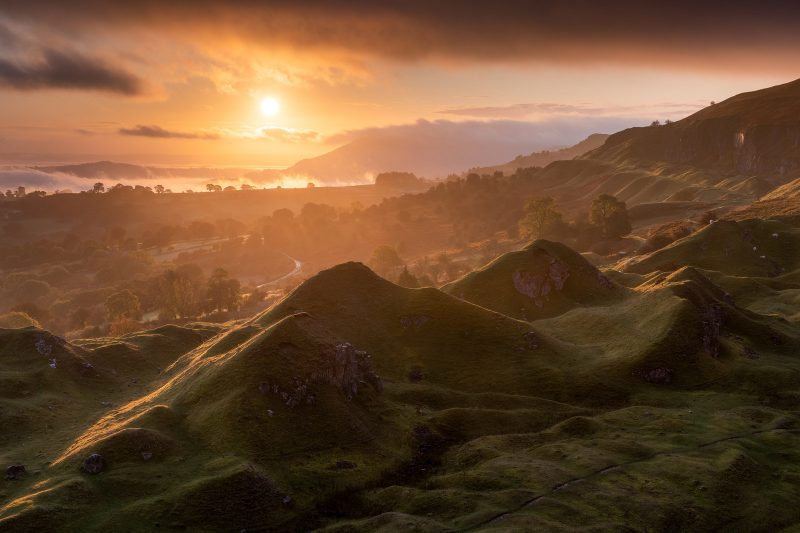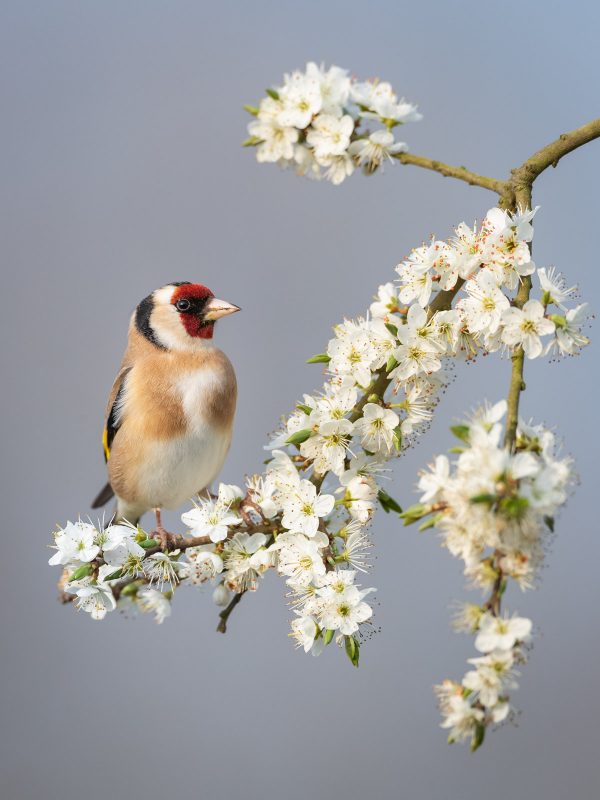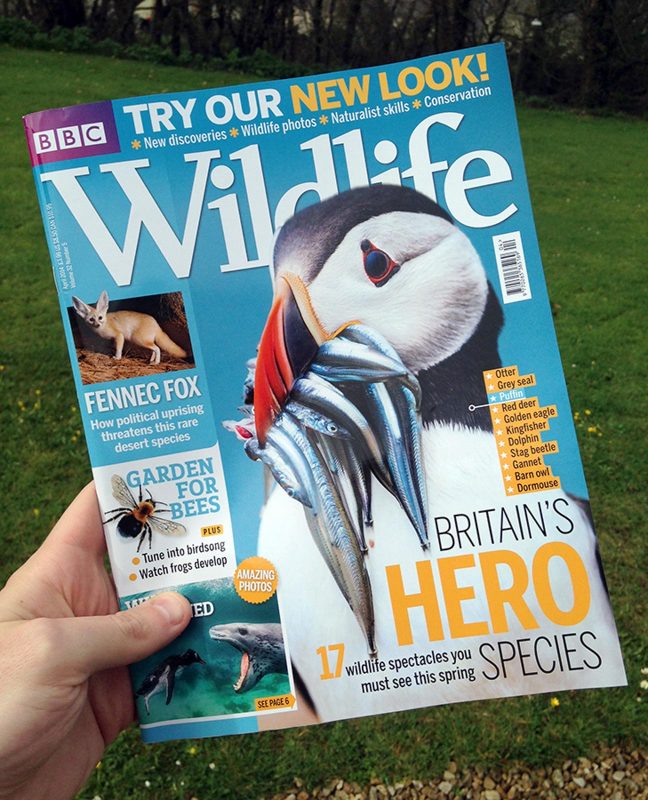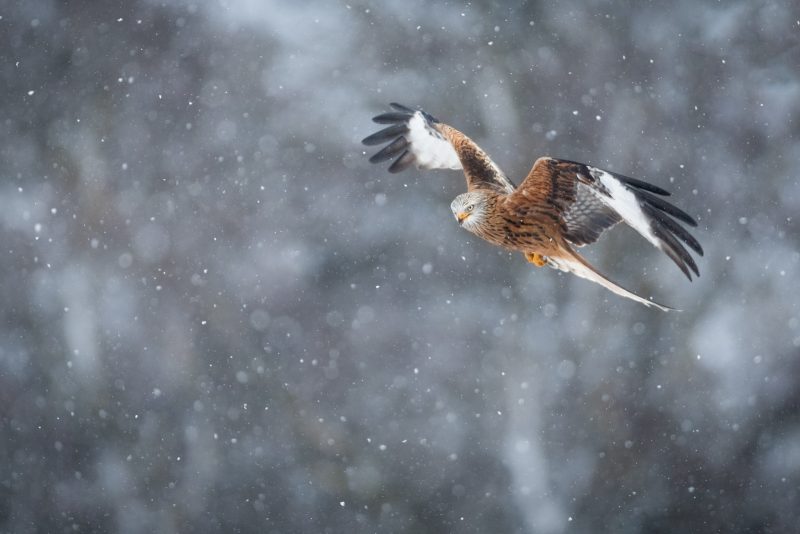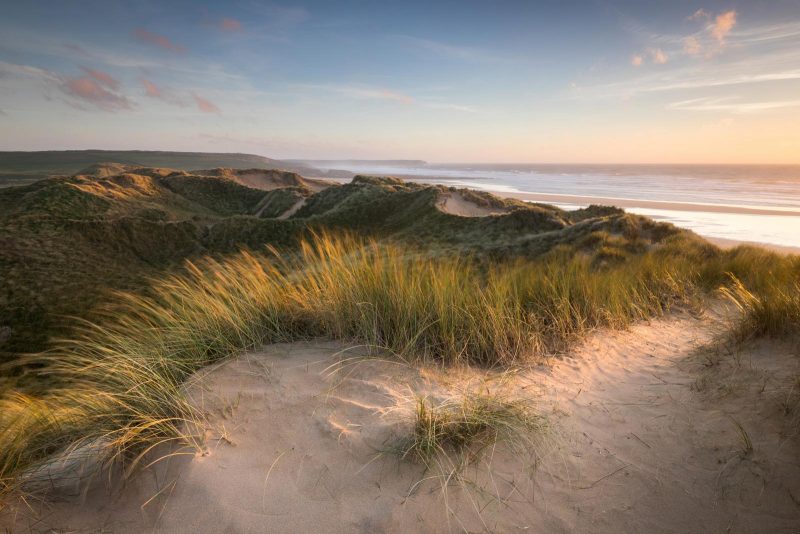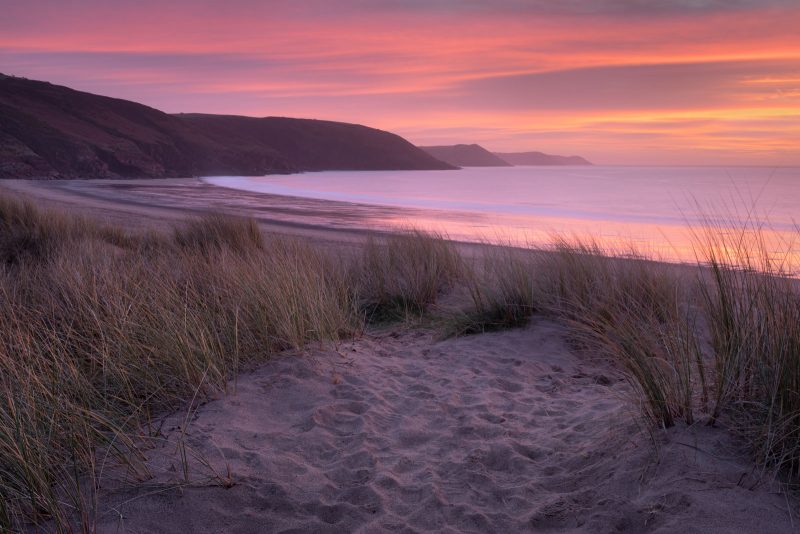Drew Buckley: From Amateur to Professional

In our interview series “From Amateur to Professional,” we will be asking established nature photographers to share their photos and see how their practices have developed, changed, and improved over time. You’ll get to see the progression of their images, learn how they got started, and find out how they transitioned from amateur to professional. To see more from this series, subscribe to our free newsletter.
Drew Buckley is an award-winning landscape and wildlife photographer based in Pembrokeshire, UK. He’s a regular contributor to the very best of wildlife, landscape, and photography magazines and has his own books published.


Self-taught, Drew has always had a passion for combining the great outdoors with his love of photography. He also runs his own photographic workshops.
When and why did you first catch the nature photography bug?
I first caught the photography bug was when I was a youngster, around the age of eight, I think. For as long as I can remember, both my brothers had 35mm film SLRs and I used to look at these cameras in wonder.
Especially my older brother’s camera, which was a Canon EOS 650 – it had a motor drive of three frames per second, slow in today’s world of 20fps+, but this camera came out in the late 80s and opened a whole new way of photographing action and sequences.
Not that you would want to fire off that many shots, as in a few seconds that would be a roll of film used up, and a processing cost of about £6 or £7. And not to mention waiting around for a couple of weeks to receive them back in the post from Bonusprint (or similar)!
Then, a few years later, after gazing through the Littlewoods and Argos catalogues at the latest compact cameras (models with the biggest zooms always got my attention!), I picked out a Pentax compact film camera for my upcoming fourteenth birthday present.
Four or so years later, with digital sensors coming down in price, I progressed onto my first ‘bridge’ camera, with a whopping 3.2 megapixels! (Canon PowerShot S1 IS). That probably kickstarted my photography journey properly. Now I had manual controls to play with, learning the exposure triangle, etc.
That camera did me proud for a good number of years, mainly photographing birds in the garden and the coastal landscapes around my home in Pembrokeshire.
I left college in 2005 for my first job as a 3D computer games artist, and in 2006 I bought my first digital SLR: the Canon EOS 30D. Four years later, in 2010, redundancy beckoned, and it was then that I decided to launch my photography business. I’m pleased to report that eleven years later, it’s continuing to grow and expand.
Show us 2 of your favourite photos – one from your early / amateur days, and one from your professional career.
The toughest part of this question was finding some old prints! I will have to have a proper dig around in the loft for some albums from the 90s, but for now I’ll go over the earliest digital images I can find. Here is an example from 2005.
It was taken at my favourite beach, Freshwater West, which just so happens to be a few miles from my front door. But regardless of proximity to home, I think it shows what I still enjoy most about landscape photography: capturing the relationship between light and textures. I think my aim here was to capture the lovely sunlight colouring across the bumpy sand patterns.
This was taken on my trusty Canon PowerShot S1 IS, many years before I discovered ND Filters, or even what they were! They would have certainly helped here to control the exposure of the sky, and help lift the foreground. Even back then, it seems I was obsessed with interesting foregrounds.
I probably have too many personal favourites to choose between from my professional career, as I photograph a huge variety of subjects and locations. Some favourite images are the result of a lot of preparation or physical endurance, others simply capture a moment perfectly.
Some are favourites due to receiving awards in competitions, and others, in a more practical sense, could be judged a favourite based on how much they have earned, in the form of print sales or media features. At the end of the day, this is a business!
I think I will opt for my favourite ‘moment captured’, with this image from a few years ago in the Brecon Beacons.
This is a location I’ve visited many times in my life. However, rarely do you find the weather and light cooperating on your morning’s jaunt in the dark, so this one sticks out quite fondly. Taken just after sunrise, with the backlit mist swirling in the valley, I love the way the light interacts with the shapes and forms of the foreground. That’s something I’ll always find captivating.
I don’t get too hung up on favourite images, though. I’d probably always say my most favourite image is my most recent one: I feel that making sure to try and better myself on each outing is a good way to work. Progression, improvement, tweaking the approach, and thinking every shot is different: this is what will make you into a better photographer.
When did you decide you wanted to become a professional photographer? How did you transition into this and how long did it take?
As mentioned above, it was more of an opportunistic push than a choice: redundancy from my lovely job in the computer games industry at 25 years old was a bit of a shock. There were no other job offers for that type of work around locally, or even nationally, and the thought of having to move away from beautiful Pembrokeshire and ‘start again’ wasn’t an option.
I looked into other avenues of work, and had always loved photography. Thanks to my previous job, I had already accumulated some decent kit to start me on my way.
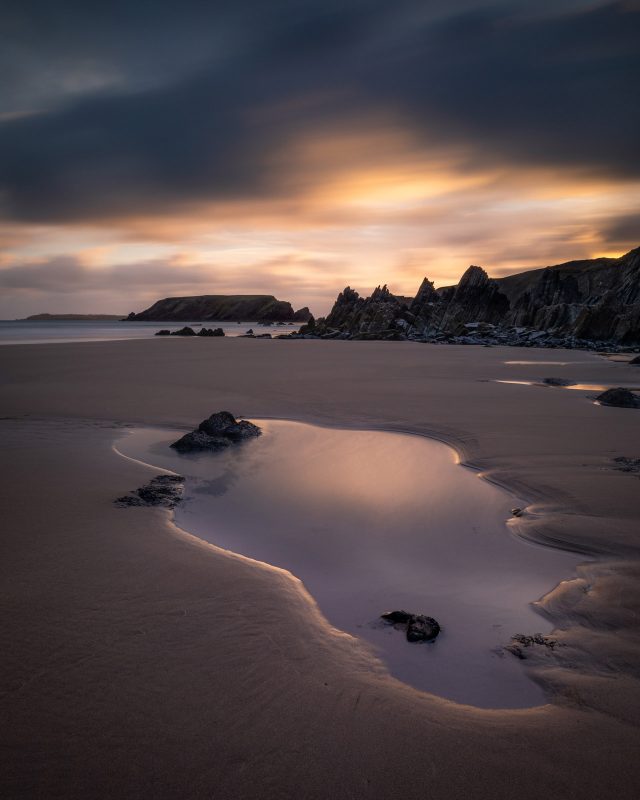
While still photographing what I enjoyed most, landscapes and wildlife, I did dip into photographing portraits, pets, and weddings. Mainly, whatever paid the bills! At the same time, I was starting to reach out and be featured in national magazines for my landscapes and wildlife.
I also started writing features and guides on photography, which I still enjoy doing immensely. Money made from the photography and magazine work was ploughed back in to pay for trips away in the UK, so I could start to create a library of work, which I could then offer for image use in newspapers and magazines.
If you are not careful, this can become a bit of a cycle. What you make in sales can then disappear on travel costs and new equipment, let alone taking a wage, so I definitely needed to be mindful. A good three or four years went by, with lots of hard work and bothering companies and magazines for work, before I started to see that it *could* become a career, and a worthy replacement for my previous job.
Was there a major turning point in your photography career – a eureka moment of sorts?
Yes, definitely. After many years of just getting by and slowly building my business, I was awarded a photography commission from my national park, to shoot the county over a couple of months in the summer. This was a real boost for me: not only in terms of money, but by the fact that I could start to win jobs like this, based on my years of experience and skills gained over time.
This was also the year I started work on a fascinating book, Wilder Wales, which involved travelling all over Wales. And thirdly, I had one of my puffin images feature on the front cover of BBC Wildlife magazine: a real career milestone. Suddenly there were now many strings to my bow, and it was all coming together.
Are there any species, places or subjects that you have re-visited over time? Could you compare images from your first and last shoot of this? Explain what’s changed in your approach and technique.
Undoubtedly, a lot of people know me for my puffin images, my puffin books (shameless plug – another puffin book coming this spring!), and running photography workshops on Skomer in the summer months.
Having this gem on my doorstep is a real bonus: I’ve probably been on Skomer island well over a hundred times, and have taken hundreds of thousands of images of these colourful birds over the years, so I have plenty of images to compare!
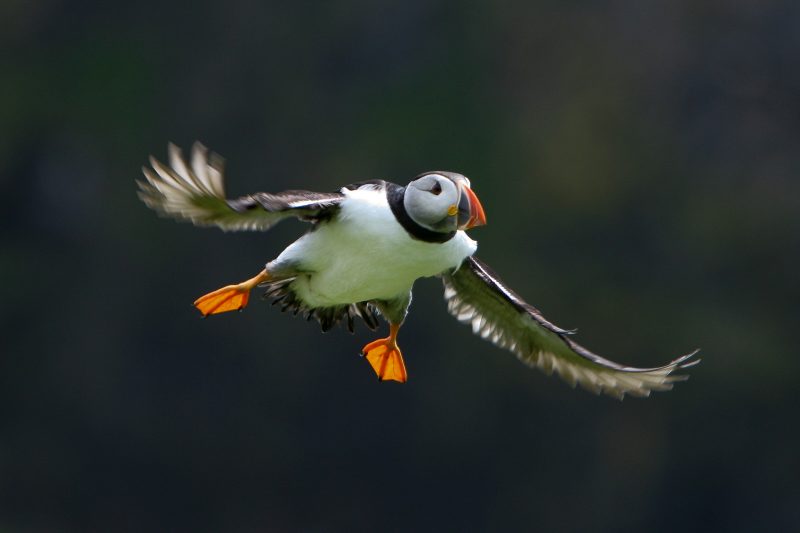
On visits as a child I rarely took a camera with me, but in the last fifteen years or so (timed with better equipment), I started to give birds in flight a whirl. The above image is from 2009, taken with a Canon 30D and 70-200mm lens.
With little in the way of sophisticated autofocus or the fast burst rates that we can use today, it was a case of using older techniques of tracking subjects in motion, pre-focusing at a set distance, and hopefully firing the shutter at the right moment when the bird enters the focal plane.
Compare that to a more recent image from 2019 (no Skomer trips in 2020):
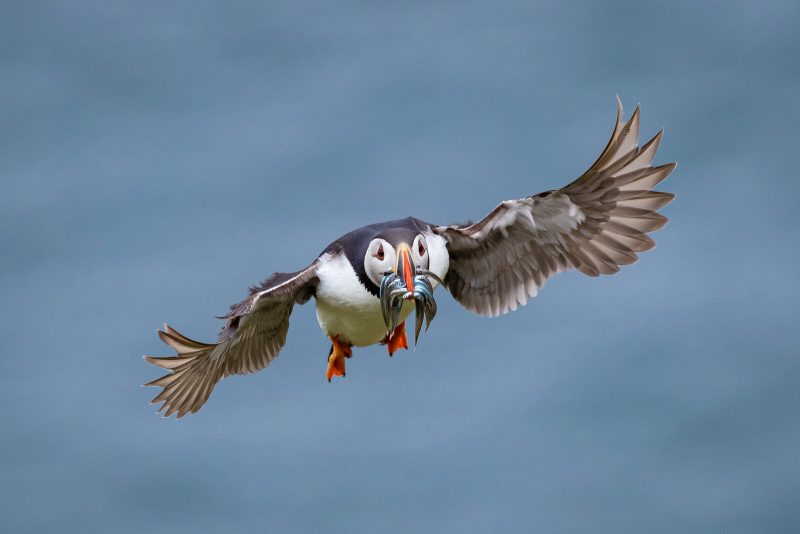
This was taken on a Canon EOS-1D X Mark II and 100-400mm lens. The 1DX offers continuous autofocus, many more autofocus points, predictive tracking, plus the faster focusing lens. The list of the benefits of this camera over the equipment from a decade prior just goes on and on.
Despite this, the fundamentals of puffin photography still remain the same: knowing the birds’ behaviours, and learning their habits. Over that passing decade, the main benefit for me was the knowledge I gained by sitting and watching these birds every year.
Learning to predict the birds’ flight paths, limiting an autofocus area, and also deciding which bird to pick out from a hundred whirling in front of the camera: all of that knowledge now allows me to be very selective and get the best from my opportunities with the puffins.
Has anything changed in regards to how you process and edit your images?
Definitely. I think back in the day, we all got a bit carried away with using all the processing controls and sliders, and creating totally awful looking images. I’ve used Photoshop for about twenty years now and there aren’t many editing styles I haven’t tried. Lightroom came along for me around ten or so years ago, and was a really revolutionary editing tool just for images.
I’d say 99% of my RAW images are now solely processed in Lightroom and my ‘style’ has evolved over the years. It has always remained similar though, making sure to keep colours and contrasts true to life, and trying to get it right in camera to start with.
Although, in extreme lighting conditions, I’ll always use the dynamic range of the sensor and the flexibility provided by RAW files to my advantage.
What photos have you re-visited over time? What has changed in your approach since the first shoot/s?
I don’t think I could improve on some of my images, as the weather conditions and/or light were unique that day. However, there are plenty of locations I’ll revisit time and again, through the seasons, to try and get a different take on them, or I’ll look for something else, as I’ve familiarised myself with a place.
I used to head out, regardless of the weather, and if I came away with something useful, then even better. That’s a good way to work, as the shots you didn’t plan for are sometimes the best.
My approach these days is almost counter-productive to image creating, as my outdoor ‘free time’ is quite limited (due to other work taking its place), so I almost need to guarantee I come away with useful images.
For landscapes, I do a lot of pre-planning and confirming the weather/clouds will be exactly what I’m after, even before leaving the house. If my predictions don’t confirm what I want, then there’s always another job that will take precedence – or, even more importantly, I’ll spend time with my amazing daughter.
What’s the one piece of advice that you would give yourself if you could go back in time?
To be honest, I probably wouldn’t have done anything that differently. One key trait to have when starting out with a new venture is patience, in all aspects of the word! I think it comes with the territory if you are a photographer: the need to be patient and give things time to grow organically.
Especially with new ideas for images, always be enthused, pre-visualise, and know that it may take two, five, or ten attempts to get right. Don’t give up.
You can visit Buckley’s website to see more of his work. For more from this series, subscribe to the free Nature TTL newsletter.


